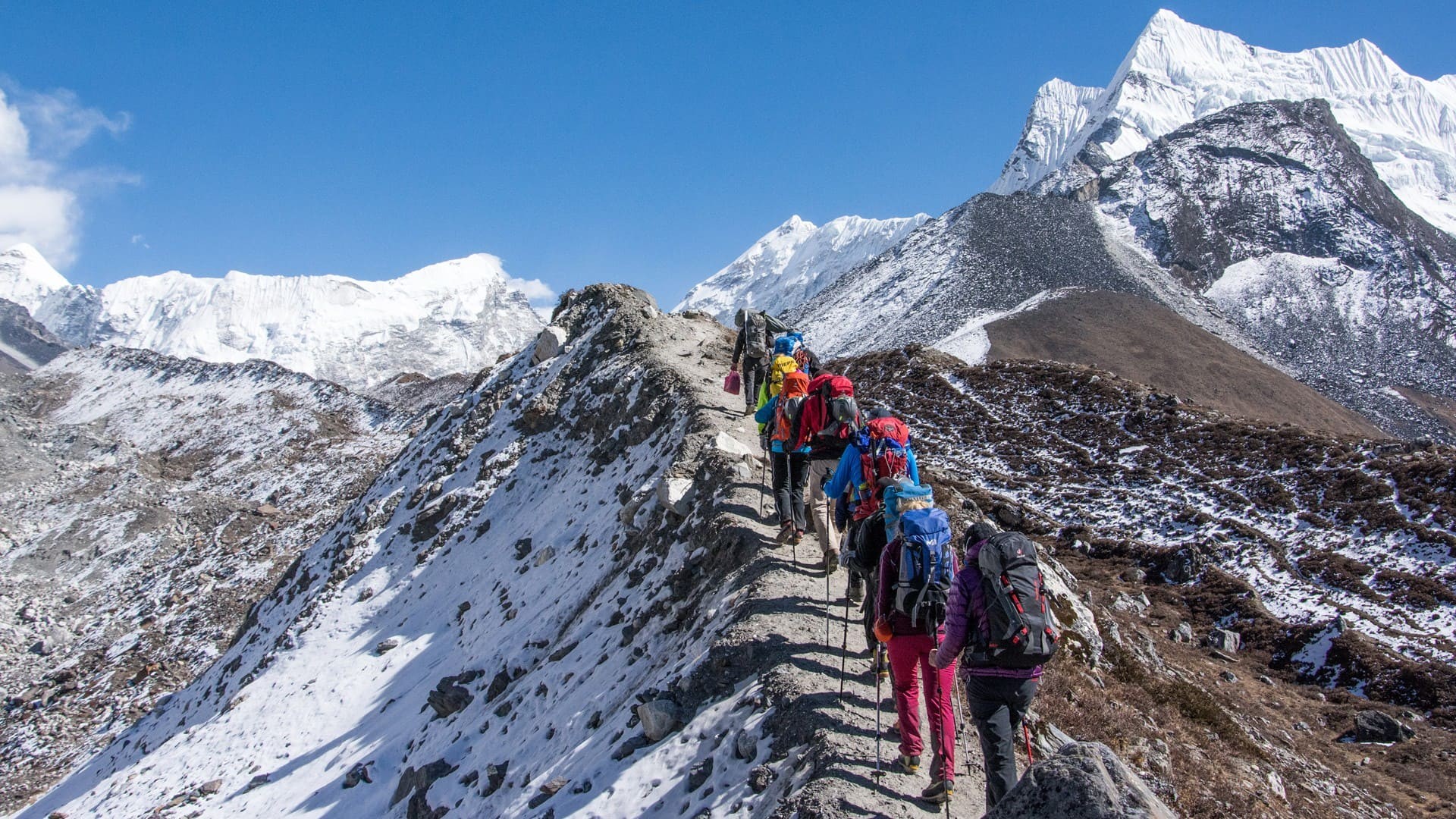0%

Trekking/File Photo: Nepal Tourism Board
KATHMANDU: Nepal’s allure as a premier trekking destination continues to captivate adventurers’ worldwide, drawing in tourists from various corners of the globe.
Notably, domestic tourists are increasingly venturing into the realm of short and extended treks, adding to the fervor of exploration within the nation’s scenic landscapes.
According to the Ministry of Culture, Tourism, and Civil Aviation, trekking and mountaineering accounted for 15 percent of the total foreign tourists visiting Nepal in 2023.
Out of over a million visitors, a substantial 154,262 embarked on trekking expeditions, underscoring the enduring appeal of Nepal’s rugged terrain.
The optimal trekking seasons, spanning from March and April and August to October, are currently in full swing, witnessing a surge in tourist footfall across the country.
As destinations flourish with activity, the trails resonate with the rhythmic steps of enthusiasts, both local and international.
What was once an endeavor predominantly embraced by foreign visitors has seamlessly integrated into the fabric of domestic tourism, signifying a paradigm shift in Nepal’s trekking landscape.
Embarking on a trek in Nepal is a holistic experience, offering a tapestry of natural wonders, distinctive geography, climatic diversity, rich biodiversity, mountainous lifestyles, cultural immersion, and historical heritage.
Additionally, you are also advised to pack a first aid kit with essential medicines and materials, especially if you have any pre-existing medical conditions.
Beyond its aesthetic allure, trekking serves as a conduit for enhancing physical well-being, fostering human connection, and promoting fitness consciousness among enthusiasts.
If you’re contemplating a trekking adventure, insights gleaned from seasoned hikers or tourist guides can illuminate the path forward, aiding in meticulous preparations and arrangements.
The cost of your trek hinges on the chosen destination, typically averaging between Rs 3,000 to 4,000 per day.
However, expeditions to the Everest region may incur higher expenses.
Additionally, the duration and complexity of the trek influence expenditure, with services within tourist hubs often commanding higher prices.
Fortunately, the proliferation of internet connectivity and online payment services along many trails streamlines transactions, albeit with limitations in remote locales.
Carrying cash remains prudent, especially in areas devoid of modern financial infrastructure.
Before embarking on your trekking journey, thorough preparation is essential to ensure a safe and enjoyable experience.
Firstly, you need to research your destination by gather information about the destination you plan to visit, including its geographical features and prevailing weather conditions.
You also need to utilize online resources such as Google Maps to familiarize yourself with the area and identify accommodation options like hotels, restaurants, and tea houses.
You are also advised to assess the length and altitude of your hike in advance to prepare yourself physically and mentally.
If you are planning to trek, you need to pack considering the season, climate, and terrain.
It would be appropriate if you invest in a lightweight trekking bag with ample capacity to accommodate essential items such as quality trekking shoes for comfort, stability, and protection against elements like mud and snow.
You also need to select appropriate attire for your trek, including a trekking jacket, moisture-wicking t-shirts, durable trousers, hats, socks, and gloves.
In colder months or high-altitude treks, ensure you have sufficient warm clothing, including a feather down jacket.
Don’t forget eye protection with goggles or sunglasses, as well as sun protection creams and lotions.
Additionally, you are also advised to pack a first aid kit with essential medicines and materials, especially if you have any pre-existing medical conditions.
Also pack snacks like biscuits, chocolate, nuts, and almonds to sustain energy levels during your trek.
It would also be advised to avoid trekking alone, particularly in unfamiliar or remote areas.
Opt for group treks or hire a knowledgeable guide for added security and support.